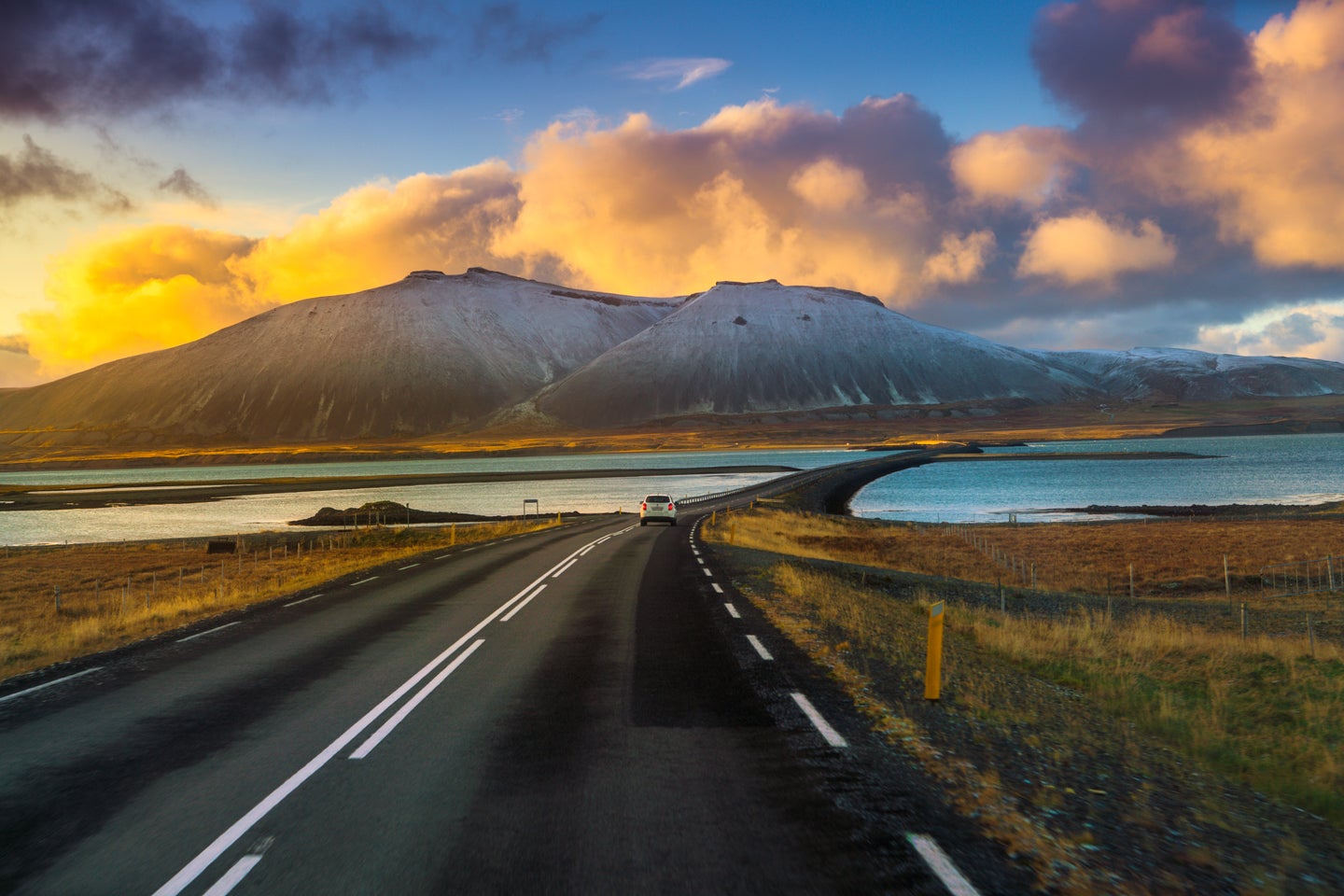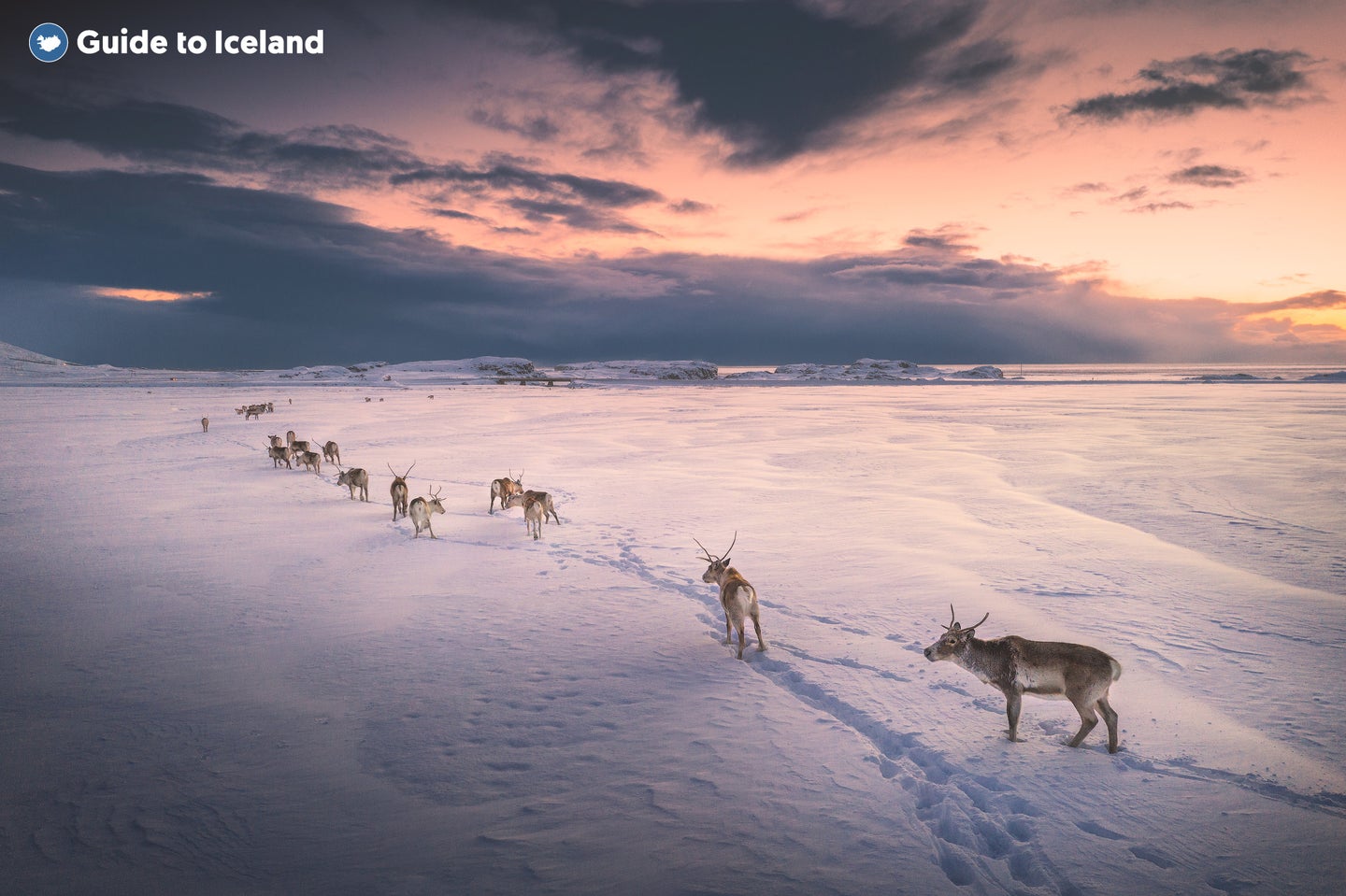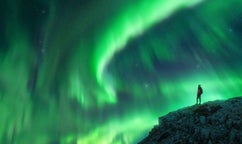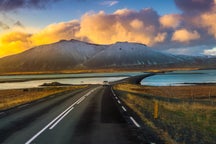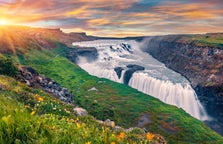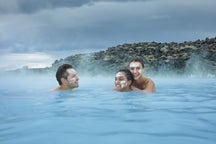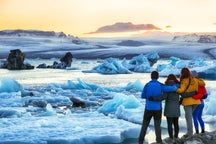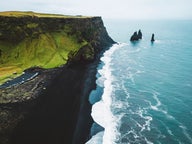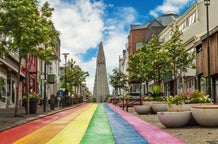Reykjavik is where most trips to Iceland begin—and it's an excellent starting point for exploring the country's diverse landscapes. From here, it’s easy to join day tours to popular regions like the Golden Circle, South Coast, and Snaefellsnes Peninsula without needing to rent a car or plan a complicated itinerary.
At the same time, the city itself is worth exploring. With its walkable center, cozy cafés, local art, and historic landmarks, Reykjavik offers a laid-back introduction to Icelandic culture. Whether you have a full day or just a few hours, guided walking tours and flexible city breaks make it simple to experience the highlights.
Reykjavik Excursions: A Gateway to Adventure
From Reykjavik, travelers can easily embark on excursions to Iceland’s stunning natural attractions. Numerous Iceland tours from Reykjavik cater to diverse interests, from outdoor adventures to geological wonders.
Top 3 Best Golden Circle Tours from Reykjavik
The Golden Circle is a popular route from Reykjavik that features three unique places: Thingvellir, where two continents meet, the Geysir geothermal area, with erupting hot springs, and Gullfoss, a powerful two-level waterfall. Day tours to the Golden Circle often include stops at lesser-known gems as well, such as the Secret Lagoon, allowing travelers to soak in geothermal waters.
-
The Golden Circle Tour from Reykjavik: Explore Iceland’s iconic Golden Circle landmarks before unwinding in the warm, tranquil waters of the Secret Lagoon.
-
Golden Circle Afternoon Tour with Transfer from Reykjavik: Discover the magic of Thingvellir, Geysir, and Gullfoss on a convenient and compact afternoon adventure.
-
Stunning 8-Hour Golden Circle Tour with Transfers from Reykjavik: Immerse yourself in the stunning beauty and history of Iceland’s Golden Circle with a full-day guided exploration of its most famous sites.
Top 3 Best South Coast Adventures from Reykjavik
South Coast day tours from Reykjavik reveal some of Iceland’s most dramatic scenery—towering waterfalls like Seljalandsfoss and Skogafoss, the black sands and basalt cliffs of Reynisfjara Beach, and some even the iceberg-filled waters of Jokulsarlon Glacier Lagoon. A guided day tour from Reykjavik offers a stress-free way to experience the South Coast with expert insights and no need to navigate on your own.
-
The South Coast of Iceland Tour from Reykjavik: Discover Iceland's stunning South Coast, featuring waterfalls, black sand beaches, and majestic glaciers on an unforgettable day trip.
-
The Glacier Lagoon & South Coast Day Tour from Reykjavik: Experience the breathtaking beauty of Jokulsarlon glacier lagoon and its floating icebergs, alongside the picturesque Diamond Beach.
-
Scenic 12-Hour Ice Cave Tour of Vatnajokull with Flights from Reykjavik: Fly to Iceland’s magical ice caves for an exclusive, awe-inspiring adventure into the heart of glacial wonders.
Top 3 Best Northern Lights Tours from Reykjavik
From September to April, Reykjavik becomes a hub for northern lights tours. Travelers venture into the countryside for optimal viewing conditions, guided by experts who monitor aurora activity to maximize the chance of witnessing this natural phenomenon.
-
Northern Lights Tour With Photos & Refreshments: Chase the northern lights on a guided adventure combining Icelandic folklore, stunning landscapes, and celestial beauty.
-
The Northern Lights Boat Cruise from Reykjavik: Set sail from Reykjavik’s harbor for a magical night, watching the northern lights dance over the ocean waves.
-
The Northern Lights Bus Tour from Reykjavik: Witness the dazzling auroras on a comfortable bus tour, guided by experts who know the best viewing spots.
Top 3 Best Snaefellsnes Peninsula Tours from Reykjavik
Known as “Iceland in Miniature,” the Snaefellsnes peninsula showcases diverse landscapes, including lava fields, craters, glaciers, and picturesque fishing villages. Tours from Reykjavik to this region often include visits to Snaefellsjokull National Park, immortalized in Jules Verne’s classic novel Journey to the Center of the Earth.
-
The Snaefellsnes Peninsula Tour from Reykjavik: Uncover the mystical charm of Snaefellsnes, with its volcanic peaks, black sand beaches, and dramatic cliffs.
-
12-Hour Small Group Tour of Snaefellsnes Peninsula with Transfer from Reykjavik: Explore stunning landscapes and coastal views with a small group and knowledgable guide.
-
The Wonders of Snaefellsnes | Private Day Tour with Optional Activities: Experience the wonders of Snaefellsnes on a personalized journey tailored to bring you unique natural and cultural highlights.
Top 3 Best Whale Watching and Puffin Tours from Reykjavik
Reykjavik’s proximity to Faxafloi bay makes it a prime location for marine wildlife tours. Whale watching excursions depart from the city’s Old Harbor, offering the chance to spot minke whales, humpbacks, and even orcas. Puffin tours during the summer months provide a close-up view of Iceland’s charming seabirds.
-
The Whale Watching Tour from Reykjavik: Set out from Reykjavik’s harbor for an unforgettable encounter with majestic whales in their natural habitat.
-
Whale & Puffin Watching Boat Tour from Reykjavik: Enjoy a unique wildlife adventure combining whale watching with a chance to see adorable puffins during their summer nesting season.
-
3-Hour Whale Watching & Wildlife Yacht Tour with Transfer from Reykjavik: Experience an intimate and personalized whale-watching journey, ensuring incredible views and expert insights.
Top 3 Best Geothermal Spas and Swimming in Reykjavik
The Reykjavik region offers a wealth of geothermal spa and swimming opportunities, blending relaxation with Iceland’s natural wonders. Visitors can unwind in iconic locations like the Blue Lagoon, renowned for its milky blue waters and rejuvenating silica mud, or the Sky Lagoon, featuring an infinity pool with breathtaking ocean views. Reykjavik’s many geothermal swimming pools, such as Laugardalslaug, provide warm waters, hot tubs, and steam rooms perfect for a leisurely soak alongside the locals.
-
Reykjavik Return Transfer to the Blue Lagoon with Comfort Admission Ticket: Combine the charm of Reykjavik with the ultimate relaxation at the world-famous Blue Lagoon.
-
Sky Lagoon Entry Ticket with Full Access: Immerse yourself in Icelandic serenity at the Sky Lagoon, featuring a stunning infinity pool and the rejuvenating seven-step ritual.
-
Relaxing Hvammsvik Hot Spring Bathing with Transfer from Reykjavik: Escape to the tranquil Hvammsvik Hot Springs and reconnect with yourself, surrounded by the breathtaking natural beauty of Iceland.
Top 3 Best Adventure Tours from Reykjavik
Thrill-seekers can embark on a variety of outdoor excursions that showcase Iceland’s natural wonders. With its proximity to volcanoes, geothermal hotspots, and even the northern lights in winter, Reykjavik is the perfect gateway to Iceland’s outdoor thrills.
-
The Silfra Snorkeling Tour from Reykjavik: Float between tectonic plates in the crystal-clear waters of Silfra, one of the world’s top snorkeling spots.
-
The Horse Riding Tour from Reykjavik: Experience Iceland’s unique landscapes on horseback, riding the gentle and photogenic Icelandic horse.
-
Guided 2 Hour Northern Lights ATV Tour with Transfer from Reykjavik: Chase the Northern Lights on an exhilarating ATV adventure through Iceland’s rugged terrain.
-
2-Hour Buggy Adventure through Icelandic Hot Springs from Reykjavik: Rev up for a thrilling off-road buggy tour through Iceland’s breathtaking mountain landscapes.
-
1-Hour Helicopter Tour of Geothermal Sights with Transfer from Reykjavik: Soar above Reykjavik and its geothermal wonders on a scenic helicopter ride and enjoy an unparalleled perspective on Iceland’s volcanic beauty.
-
Paragliding Adventure Over Reykjavik: Take to the skies for a breathtaking tandem paragliding adventure, offering heart-pounding views of Iceland’s stunning landscapes.
Reykjavik Culture: Tips for First-Time Visitors
Reykjavik is also home to a vibrant cultural scene, with world-class museums, art galleries, and historical landmarks. If you're only in town for a night or two, a small-group Reykjavik Walking Tour will help you make the most of your time and introduce you to the irresistible charms of this tiny yet mighty capital city.
The National Museum of Iceland and the Settlement Exhibition delve into the country’s Viking roots and more modern history, while the Reykjavik Art Museum showcases contemporary Icelandic and international art.
-
Reykjavik City Card 24 hours with Free Entry to Museums, Galleries, & Geothermal Pools: Explore Reykjavik’s top attractions with ease, enjoying free entry to museums, pools, and public transport in one convenient pass.
-
Reykjavik Food Walk Tour: Savor the flavors of Iceland with a guided culinary tour through Reykjavik’s best local eateries and hidden gems.
-
Magical 1.5 Hour Folklore Walking Tour of Reykjavik with Tales of Trolls, Elves & Hidden People: Discover Reykjavik’s enchanting history and mythical tales on a guided walk through the city’s most intriguing spots.
Practical Tips for Visitors
-
Booking Reykjavik Excursions: To ensure availability, especially during peak travel seasons, book your tours in advance.
-
Packing Essentials: Iceland’s weather can be unpredictable. Layers, waterproof gear, and sturdy footwear are essential.
-
Exploring Independently: For travelers who prefer self-guided adventures, renting a car in Reykjavik will allow easy access to attractions within a few hours of the city.
Why Choose Reykjavik as Your Base?
Reykjavik’s strategic location and excellent infrastructure make it a convenient base for exploring Iceland. You'll find a wide variety of accommodations in Reykjavik, from budget-friendly hostels to luxury hotels, along with a bustling nightlife and numerous dining options.
Whether you’re captivated by Iceland’s dramatic landscapes, eager to experience the country's rich culture, or simply looking for adventure, Reykjavik is the perfect starting point. With countless Iceland tours from Reykjavik and exciting opportunities for outdoor excursions, your journey through the Land of Fire and Ice promises to be nothing short of extraordinary.





